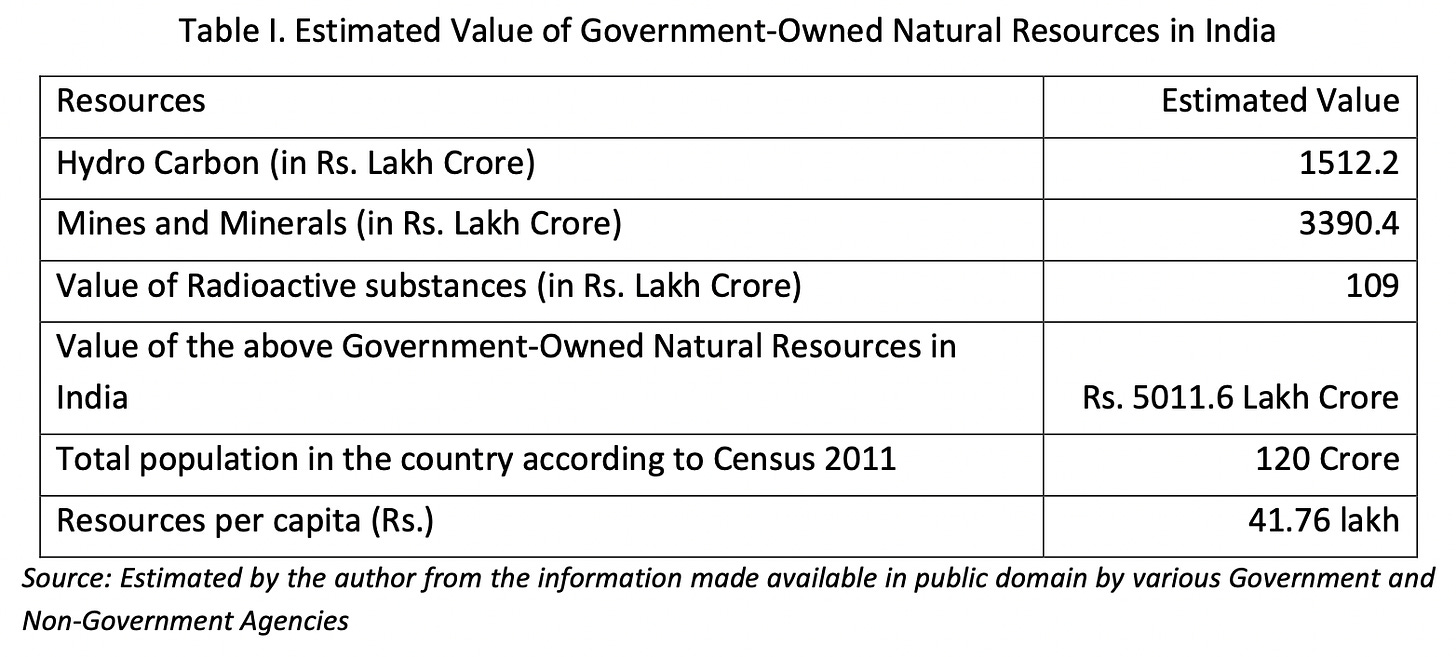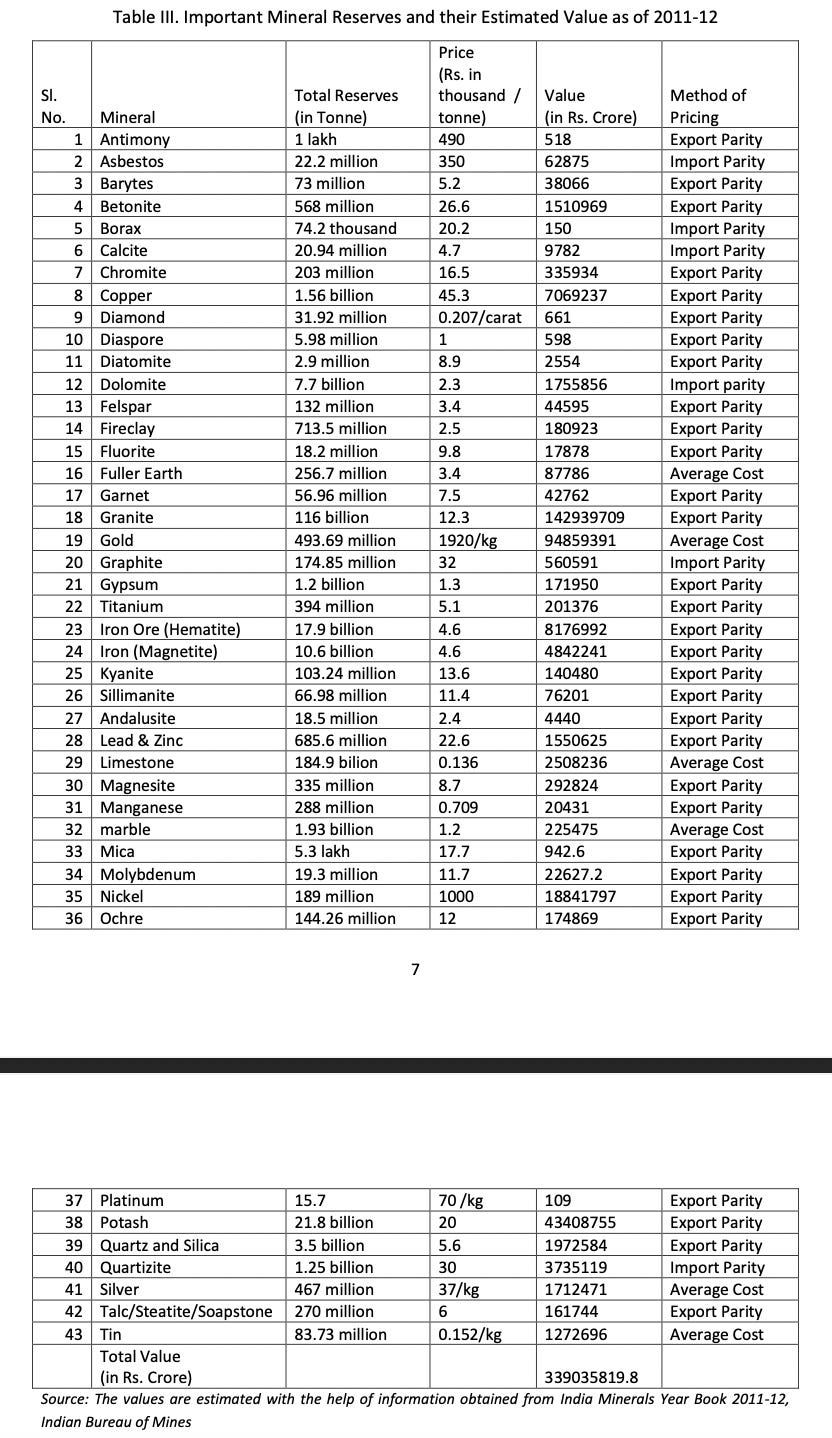Sridhar Kundu estimates the total value of all explored hydrocarbons (coal, crude oil, natural gas, etc.) and major mines and minerals in India to be at ~Rs. 5,011.6 lakh crore using the Indian Minerals Book 2011 (published by Indian Bureau of Mines, Government of India).
You can read the full report here (click). I’m attaching some relevant tables from the report here:




Credit: Kundu (2014)
Now, of course, the market value of minerals changes, so does their extraction cost (which also converts resources into reserves and vice-versa) and we are also exploring — i.e. these numbers will change and entail inaccuracy but they at least give us a ballpark for what we have: Rs. 5,011.6 lakh crore worth of mineral reserves.
UPDATE (January 9, 2024): I don’t think adding the value of all identified mineral reserves at current market price is the right way to look at mineral wealth. I think the right way to do that is to find present value of all future cashflows from minerals (by predicted the future cashflows). World Bank’s Wealth Accounts provide an estimate using this methodology:
| Natural resouce category | Series Code | 2014 [YR2014] | 2015 [YR2015] | 2016 [YR2016] | 2017 [YR2017] | 2018 [YR2018] |
|---|---|---|---|---|---|---|
| Fisheries | NW.NCA.FISH.PC | 6.9425108 | 6.81512602 | 6.933280981 | 7.273546543 | 6.61710382 |
| Forests (ecosystem services) | NW.NCA.FECO.PC | 74.6465893 | 75.05137937 | 75.47389544 | 76.62429828 | 83.11028446 |
| Forests (timber) | NW.NCA.FTIM.PC | 44.33886249 | 44.65131445 | 46.61686953 | 46.36488601 | 43.38496877 |
| Fossil fuels | NW.NCA.FOSL.PC | 711.2141754 | 640.8952077 | 546.5525911 | 503.0511051 | 516.1637922 |
| Mangroves | NW.NCA.MANG.PC | 17.31830293 | 17.98752845 | 18.64474348 | 19.29085943 | 19.92626941 |
| Non-renewable assets | NW.NCA.SSOI.PC | 1012.045897 | 872.1786605 | 712.9535422 | 675.4840335 | 628.1452895 |
One should keep two things in mind though. First, it includes other types of natural resources like fisheries and forests that aren’t included in Kundu’s estimate. Second, it might not include certain minerals in the non-renewable assets category that are included in Kundu’s estimate. But since World Bank’s total (at about USD 1300 for 2018, so less then half of our GDP back then) is so different from Kundu’s, it shouldn’t make a difference.